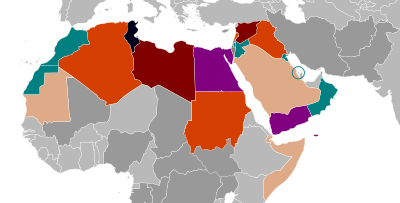Arab Winter
[12] Events referred to as the Arab Winter include those in Egypt that led to the removal from office in 2013 of Mohamed Morsi and the subsequent election in 2014 of Abdel Fattah el-Sisi.
[23] Political developments, particularly the restoration of authoritarianism and suppression of civil liberties in Egypt since 3 July 2013, have been described as constituting a "military winter" that functioned in opposition to the goals of the Arab Spring.
[17] According to The Economist, Malta has "benefitted" from the Arab Winter, as tourists who might otherwise be in Egypt or Tunisia opt for a safer alternative.
[19] Political columnist and commentator George Will reported that as of early 2017, over 30,000 lives had been lost in Libya, 220,000–320,000 had been killed in Syria and 4 million refugees had been produced by the Syrian Civil War alone.
Casualties per crisis include: The political turmoil and violence in the Middle East and North Africa resulted in massive population displacement in the region.
[34] The attempts by some Libyans, Syrians and Tunisians to seek safety from the violence by crossing the Mediterranean sea have triggered fears among European politicians and populations of arrivals that might "flood" their shores.
[35] Monetary support authorised by the German legislature for private rescue operations at sea have triggered Italian government animosity.

